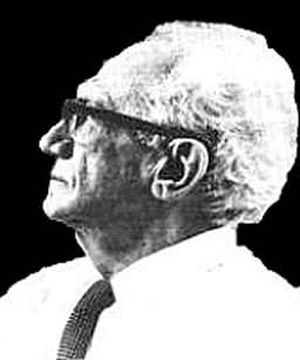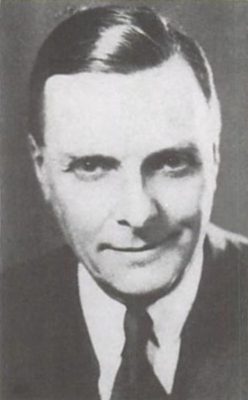William Comyns Beaumont, (1873–1956) was a British journalist and author. He was also a staff writer for the Daily Mail newspaper, and editor of “the Great Eight”[1]Time, “Eight Less One“, Monday, Aug. 15, 1932 papers and magazines including the London Magazine, Illustrated London News, Bystander, National Graphics, Passing Show, and Pan.[2]George Moore et al; Helmut E. Gerber (Ed.), “George Moore on Parnassus”, University of Delaware Press, 1988, ISBN 0874131529, 9780874131529, 896 pages. p.616 He also used the pseudonym, “Appian Way”. Alfred de Grazia described him as a prominent catastrophist in his book Chaos and Creation.[3]Alfred de Grazia, Chaos and Creation: An Introduction to Quantavolution in Human and Natural History (1981) Metron Publications. Page 8., and writer John Michell describes Beaumont thus:
“His main subjects were mythology, early history, geology, and ancient astronomical records. In all of them he found convincing evidence that the earth had suffered many cataclysms in the course of its history, the most recent having occurred in about 1322 B.C.”. Beaumont suggested they “were caused by meteoric impacts which in turn are closely related to cometary movements. That belief was the cornerstone of Beaumont’s revolution theories and history and geography”.[4]John Michell, Eccentric Lives and Peculiar Notions, Adventures Unlimited Press, 1999, ISBN 0932813674, 9780932813671, 248 pages. “Jerusalam in Scotland and other findings of a revisionist geographer” (pp.136)
Beaumont’s ideas
In his book, Cosmic Heretics, Alfred de Grazia summarises Beaumont’s main ideas as follows:[5]Alfred de Grazia, Cosmic Heretics (1984) Metron Publications, USA. ISBN:0-940268-08-6.
- The geology of the world’s surface is largely catastrophic.
- The catastrophe was caused by a cometary collision.
- All geological formations were shifted as a result.
- Cosmic lightning played a major role.
- Hydrocarbons were present in cometary tails.
- Ancient chronology was several hundred years too old.
- The Ancient calendars had to be revised because of the catastrophe.
- Many species were extinguished catastrophically.
- Religion was born in cometary worship and tied to phallic forms because of the shape of comets.
- Fear of cometary collisions is inherited by mankind.
- Vermin were deposited by comets which also provoked plagues.
- Deities from Egypt, Greece, Meso-America, and elsewhere were identified with planets.
- Pyramids were both astronomical observatories and ‘air-raid shelters’ for nobility and kings.
- Planet Saturn, as a comet, caused the Noachian Deluge.
- The Atlantis date (c. 9500 BC) given by Plato had to be shortened.
- Extensive legendary evidence pictures the ‘hairy’, ‘bearded’, ‘blazing stars’ that were comets.
- Stonehenge, Avebury Circle and similar monuments were astronomical instruments.
- Central American legends (and cultures) were contemporaneous with those of the Old World.
- The intercalary ‘five evil days’ were cursed because they coincided with a world disaster and the ending of an age.
- The serpent, dragon, winged-globe, caduceus, and other ancient symbols are traceable to cometary catastrophes.
- Religious festivals are dated by cometary catastrophes.
- Cometary conflagrations are the origin of coal deposits.
- The ancients had a true 360 day year.
- The planet Venus underwent great changes in color, diameter, figure, and orbit in the time of Ogyges.
- Quetzalcoatl (Coculkan-Hurakan) commemorated the cometary dragon for the Meso-Americans.
Similarity to Velikovsky
Benny J. Peiser writes:
“Did Immanuel Velikovsky knowingly present ideas someone else had developed many years earlier as his own? While this question seems bizarre even to his most ardent opponents, it was recently raised in a paper by Robert Stephanos. .. Beaumont’s theses are almost identical to those of Velikovsky. Yet Beaumont developed and published them as early as the 1920s and 1930s.”[6]Benny J Peiser, “William Comyns Beaumont: Britain’s most eccentric and least known Cosmic Heretic”, SIS Chronology & Catastrophism Review, 1996:2 (May 1997). Also available online here [7]Stephanos, R.C., “Catastrophists in Collision: Did Velikovsky borrow from Beaumont’s original works?”, Fate, Volume 47, Number 3, Issue 528, Mar. 1994, pp. 66-72.
Peiser continues:
“De Grazia was suspicious: ‘Could there have been a ‘Bridie Murphy Effect’?’ Had Velikovsky simply forgotten that he had already come across Beaumont’s books (or ideas) in the 1920s or 1930s?
“In hindsight, de Grazia was too quick to rule out direct influence. He failed to check whether Beaumont’s books were stored in the Public Library on 42nd Street, the other big library which Velikovsky had frequently used during the 1940s. It holds all of Beaumont’s early books 13, so they were readily available to Velikovsky during his ten years of research.”[8]ibid. also 13 Message from Charles Ginenthal on Kronia List, 31st Oct. 1996: “I have just returned from the 42nd Street Library and Beaumont’s books are there, viz. The Mysterious Comet, The Riddle of the Earth by Appian Way, The Riddle of Prehistoric Britain & The Private Life of the Virgin Queen“.
Selected bibliography
- The Riddle of the Earth, Chapman & Hall, London (or Brentano’s, New York), 1925, OCLC 1517479
- The Mysterious Comet: Or the Origin, Building up, and Destruction of Worlds, by means of Cometary Contacts, Rider & Co., London, 1932, OCLC 8997586
- The Riddle of Prehistoric Britain, Rider & Co., London, 1946 (Kessinger Publishing Co., 1997, ISBN 1564599000). Authored under the pseudonym, Appian Way
- Britain, the Key to World History, Rider & Co., London, 1947. Reviewed in Scotsman: The Grail, Jesus’s children and Stone Age lasers: Scotland’s madder myths – Scotland is the Lost City of Atlantis, Diane Maclean, The Scotsman, April 15, 2005
- The Private Life of the Virgin Queen, self-published, 1947, OCLC 601691
- A Rebel in Fleet Street, Hutchinson & Co., London, 1948 (or 1944) (his autobiography)
- After Atlantis: the Greatest Story Never Told (unpublished; referenced in Eccentric Lives, Peculiar Notions, John Michell, 2002, ISBN 1579122280, pp. 136-143)
External links
- William Comyns Beaumont Official website, and republished books
- www.comynsbeaumont.com
References
| ↑1 | Time, “Eight Less One“, Monday, Aug. 15, 1932 |
|---|---|
| ↑2 | George Moore et al; Helmut E. Gerber (Ed.), “George Moore on Parnassus”, University of Delaware Press, 1988, ISBN 0874131529, 9780874131529, 896 pages. p.616 |
| ↑3 | Alfred de Grazia, Chaos and Creation: An Introduction to Quantavolution in Human and Natural History (1981) Metron Publications. Page 8. |
| ↑4 | John Michell, Eccentric Lives and Peculiar Notions, Adventures Unlimited Press, 1999, ISBN 0932813674, 9780932813671, 248 pages. “Jerusalam in Scotland and other findings of a revisionist geographer” (pp.136) |
| ↑5 | Alfred de Grazia, Cosmic Heretics (1984) Metron Publications, USA. ISBN:0-940268-08-6. |
| ↑6 | Benny J Peiser, “William Comyns Beaumont: Britain’s most eccentric and least known Cosmic Heretic”, SIS Chronology & Catastrophism Review, 1996:2 (May 1997). Also available online here |
| ↑7 | Stephanos, R.C., “Catastrophists in Collision: Did Velikovsky borrow from Beaumont’s original works?”, Fate, Volume 47, Number 3, Issue 528, Mar. 1994, pp. 66-72. |
| ↑8 | ibid. also 13 Message from Charles Ginenthal on Kronia List, 31st Oct. 1996: “I have just returned from the 42nd Street Library and Beaumont’s books are there, viz. The Mysterious Comet, The Riddle of the Earth by Appian Way, The Riddle of Prehistoric Britain & The Private Life of the Virgin Queen“. |

